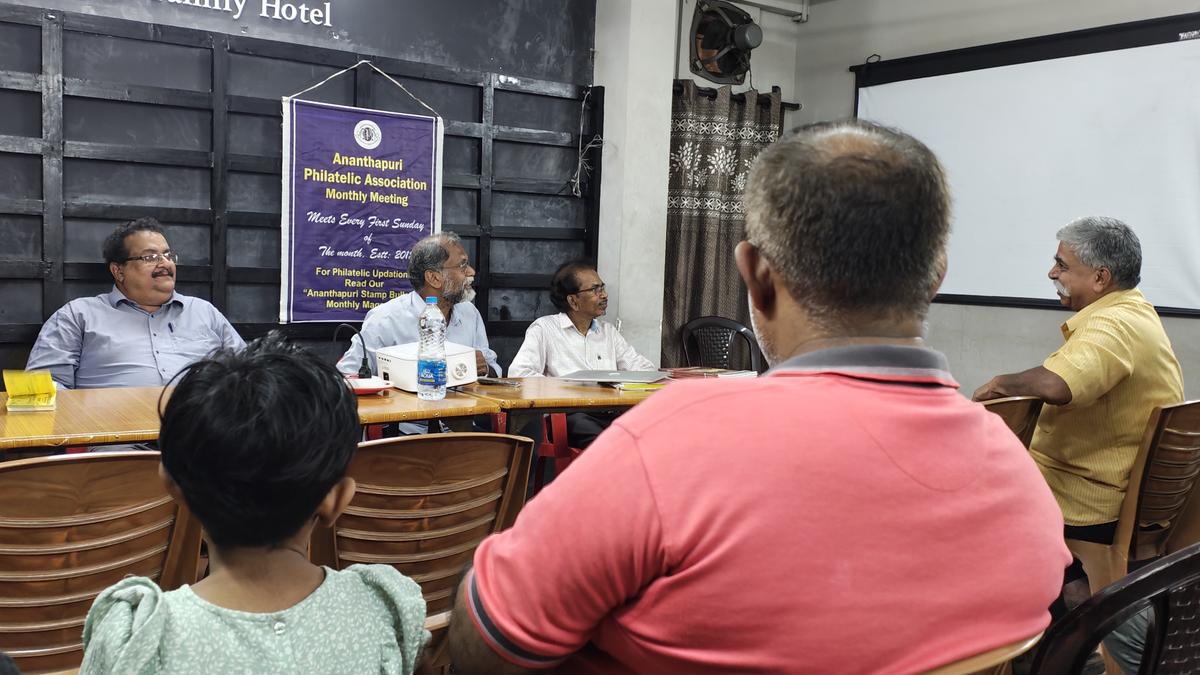The meeting hall at Poorna Hotel located at Palayam, Thiruvananthapuram, is booked for the evening on the first Sunday of every month since April 2012. It is here that the members of Ananthapuri Philatelic Association (APA), aged between 10 and 90, gather to discuss philately and exchange stamps or other postal stationary such as covers, brochures and so on.
Established on March 28, 2012, by P Mohanachandran Nair, a former bank employee, with a few other philatelists in the city, APA is currently the only association exclusively for philately in the state capital, holding the door open for this dying practice. With over 208 members — most of them living outside Kerala — APA is the only association in the State to be honoured by Philatelic Congress of India.
P Mohanachandran Nair, APA Secretary
| Photo Credit:
SPECIAL ARRANGEMENT

Winner of a large vermeil medal (third best) at a recent national-level virtual exhibition, Mohanachandran, 67, believes that the hobby is losing steam mainly due to the disappearing practice of sending letters.
“I started collecting stamps from my classmates. One day, I came across an intriguing Singaporean stamp with a Kathakali picture. Later, I discovered that these stamps were part of a set with other classical dances, and I started chasing them,” says Mohanachandran, current secretary of APA, who has been collecting stamps since class VI.
Mohanachandran, who was part of the Kerala Philatelic Association, which later became the Philatelic and Numismatic Association, was inducted into the association during his college days by KC Eapen, a veteran philatelist, in the late 70s. “The meetings were on the first Sunday of every month at the Trivandrum Hotel. It was there that I saw new stamps and albums.”

First philatelic exhibition conducted by APA in 2014
| Photo Credit:
SPECIAL ARRANGEMENT
Giri Nair, an IT professional, and an APA member, says, he became a philatelist only in 2004 although he had been collecting stamps since he was five. “I collected stamps without understanding what philately is,” says Giri, who began by tearing stamps off letters received by his government employee parents and relatives abroad. “However, I used to stick the stamps in my notebooks and ruin it. It was way later that I understood the significance of stamps. I learnt about catalogues, understanding its value, how to store mint(unused) stamps and so on from people like Mohanachandran sir and through exhibitions,” adds Giri, who is a collector of stamps on places he visits, history, culture, and food, among others.
For Giri, philately is a family affair with his wife Prasheeja Kumari and son Aditya Giri joining him. “For more than 15 years, she has been into philately more than me,” he says. “I was hooked to it seeing my parents collect stamps and enter information about it,” says Aditya, who collects stamps on football and Kerala heritage. “I like knowing more about new things and that’s why I collect these,” adds the 12 year old.
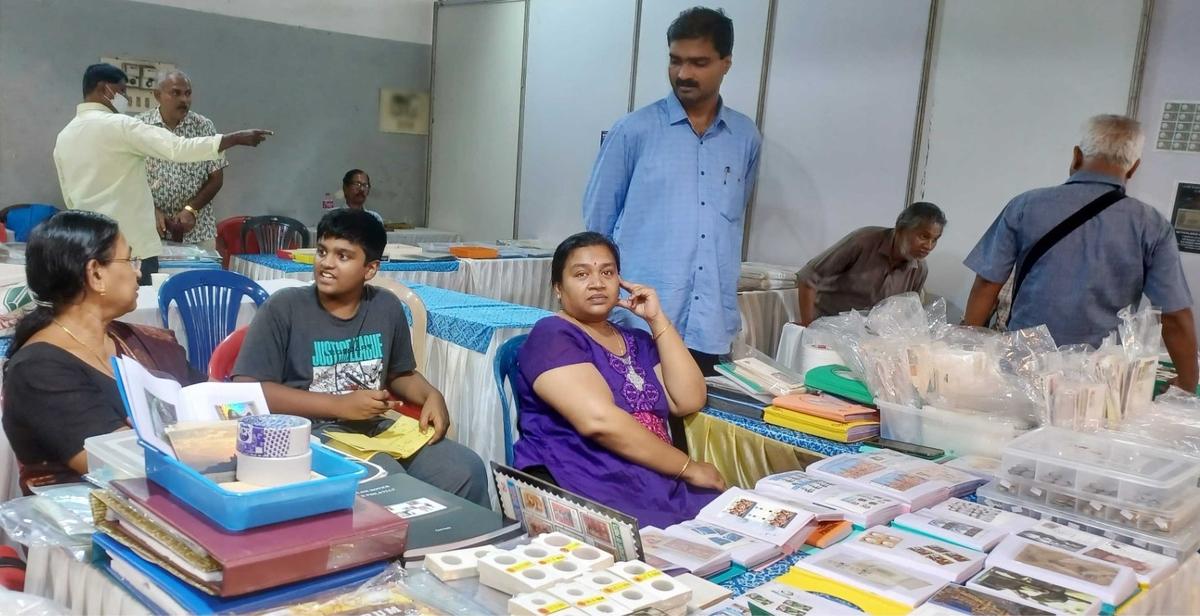
Giri Nair (standing) and family at a philatelic exhibition
| Photo Credit:
SPECIAL ARRANGEMENT
Jeevan P Nair, a former IT professional currently preparing for the government services exams, says, “One important thing about stamp collecting is that you learn more with every new stamp released — you research and understand its context with the help of covers and brochures released with it.” Jeevan, a member of APA for the past two years, specialises in collecting special covers and joint-issue stamps released by India in collaboration with other countries to commemorate an event, topic or person. He adds, “Daily wage workers and people holding topmost positions in MNCs are part of this community. They share whatever knowledge and experience they have in this domain with each other.”
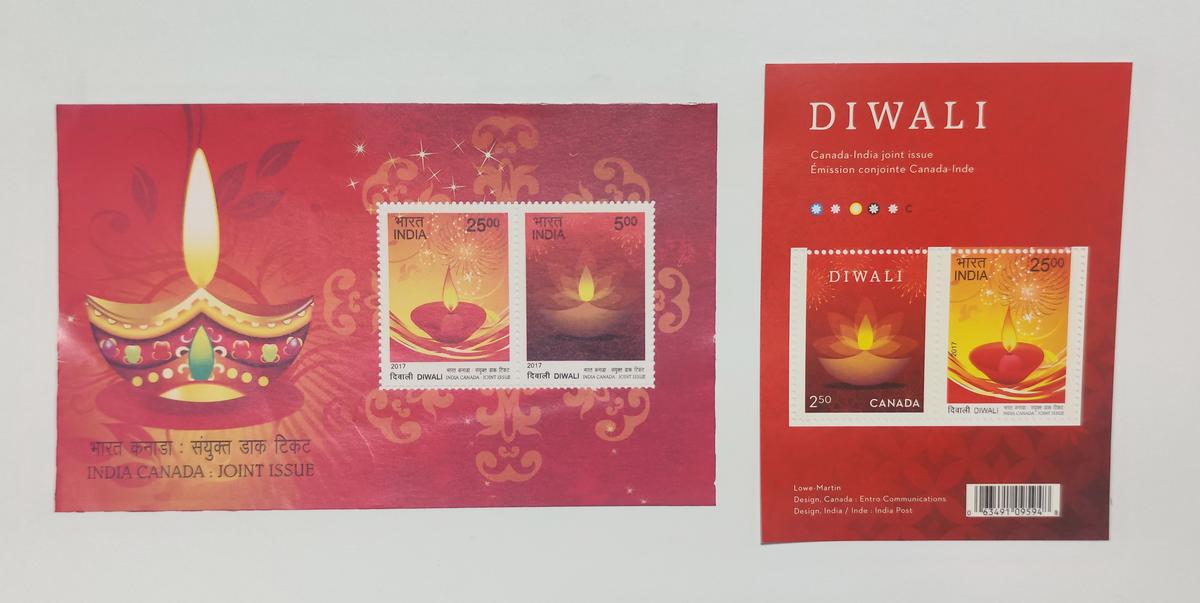
A Diwali-themed, commemorative postage stamp issued jointly by India and Canada on September 2017 from Jeevan’s collection
| Photo Credit:
SPECIAL ARRANGEMENT
Renewing interest
Mohanachandran has been taking classes in schools with a few other philatelists to revive the waning interest in philately across Kerala. APA also organises exhibitions, quizzes, and workshops in schools.
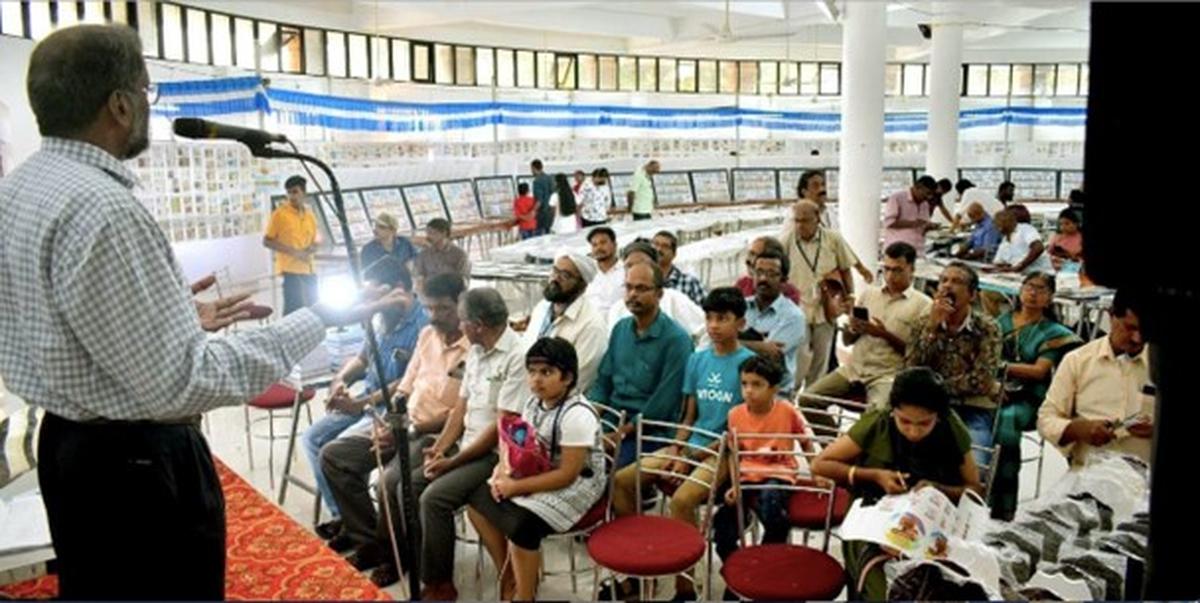
Mohanachandran taking a philately class in Kannur
| Photo Credit:
SPECIAL ARRANGEMENT
Giri says, “The biggest challenge for philately is that there is no genuine interest for it amongst children. There should be philatelic products and exhibitions that interest them. If they are into a subject, they can collect stamps and write about it using philately as a medium. For instance, if you are a foodie, you can collect stamps about food. When you present this collection to other foodies, they will be inspired to make a similar collection”
Also read | Philately scholarship scheme for students of classes VI to IX
Jeevan’s tip for anyone who wants to get started with this hobby is opening a philatelic deposit account at the nearest philately bureau. “With this account, you can get all the latest stamps as soon as they release for face value (postage value). However, if you want to collect older stamps, you can join associations and exchange stamps.”
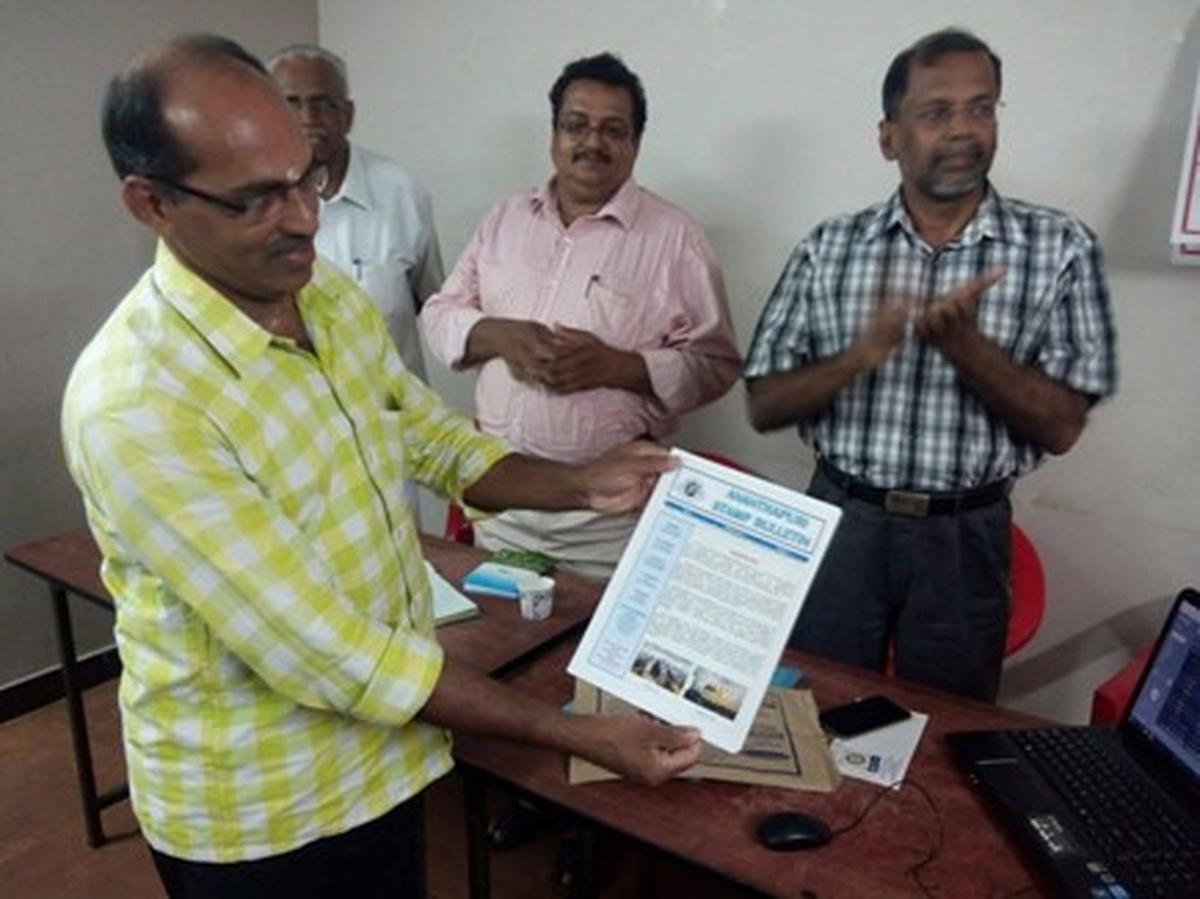
The first issue of Ananthapuri Stamp Bulletin, digital magazine released in March 2016, by an association member V Sreekumar.
| Photo Credit:
SPECIAL ARRANGEMENT
Mohanachandran is also the editor of the Ananthapuri Stamp Bulletin, an e-magazine to promote philately. The periodical has crossed 108 editions and has around 900 subscribers and a readership of around 2000, claims Mohanachandran, who hopes to have more younger members to train for exhibitions in future.
Lifetime membership fee at Ananthapuri Philatelic Association is ₹1,500 and the annual membership fee is ₹250. For details, 9387801948.
Published – March 03, 2025 02:06 pm IST


